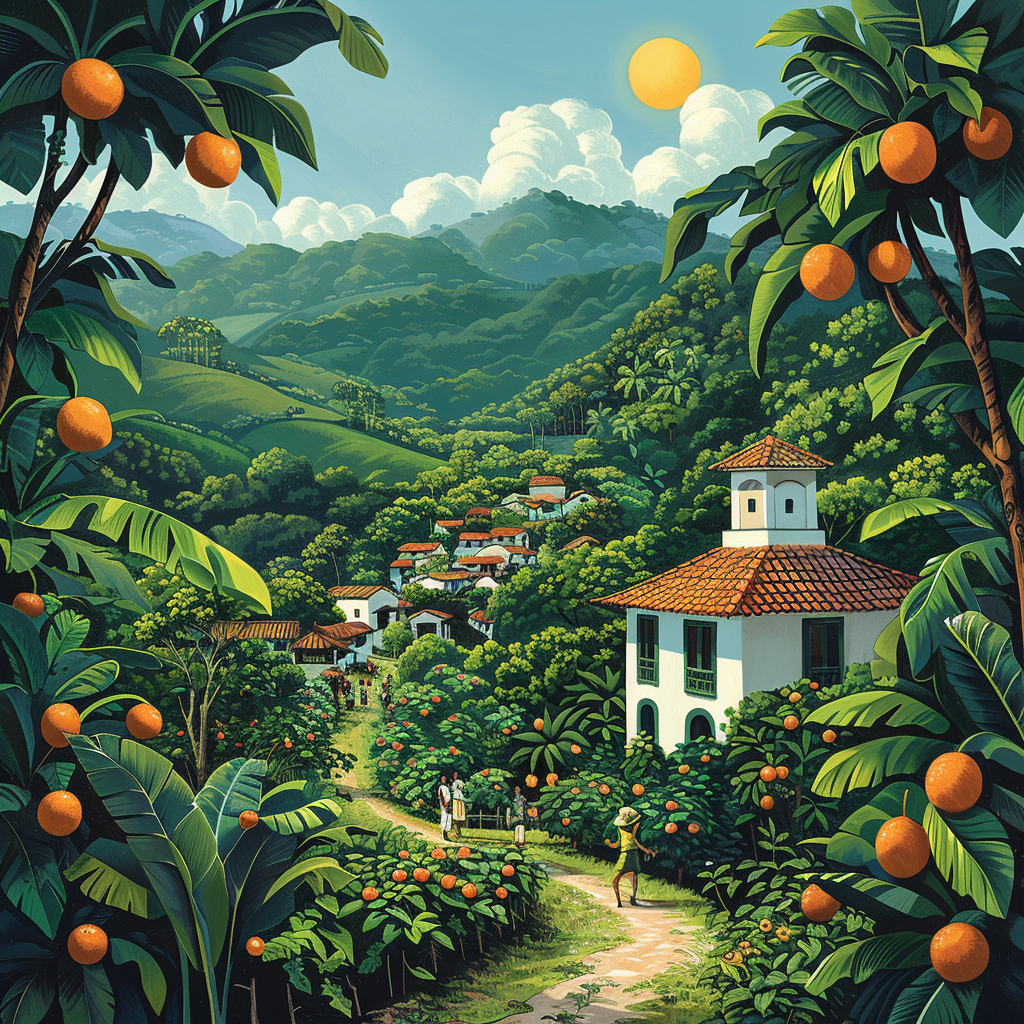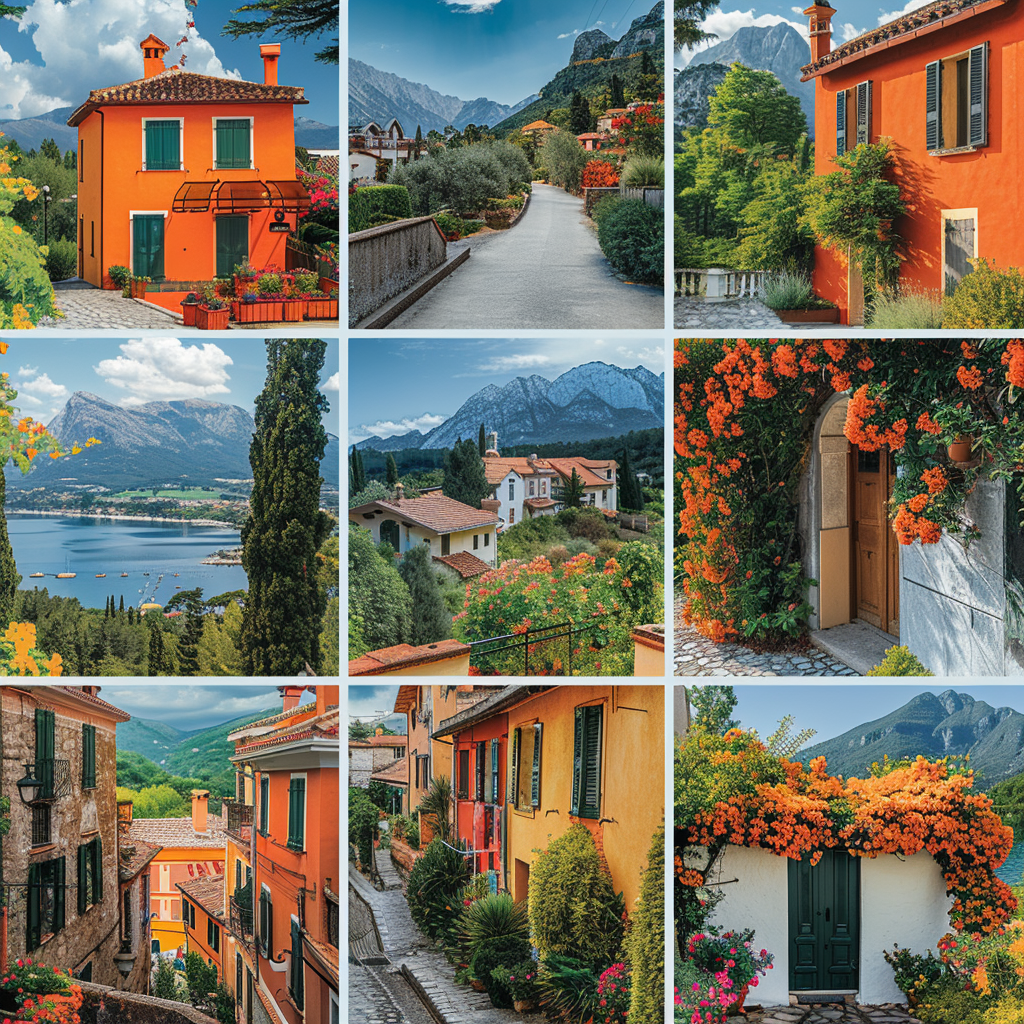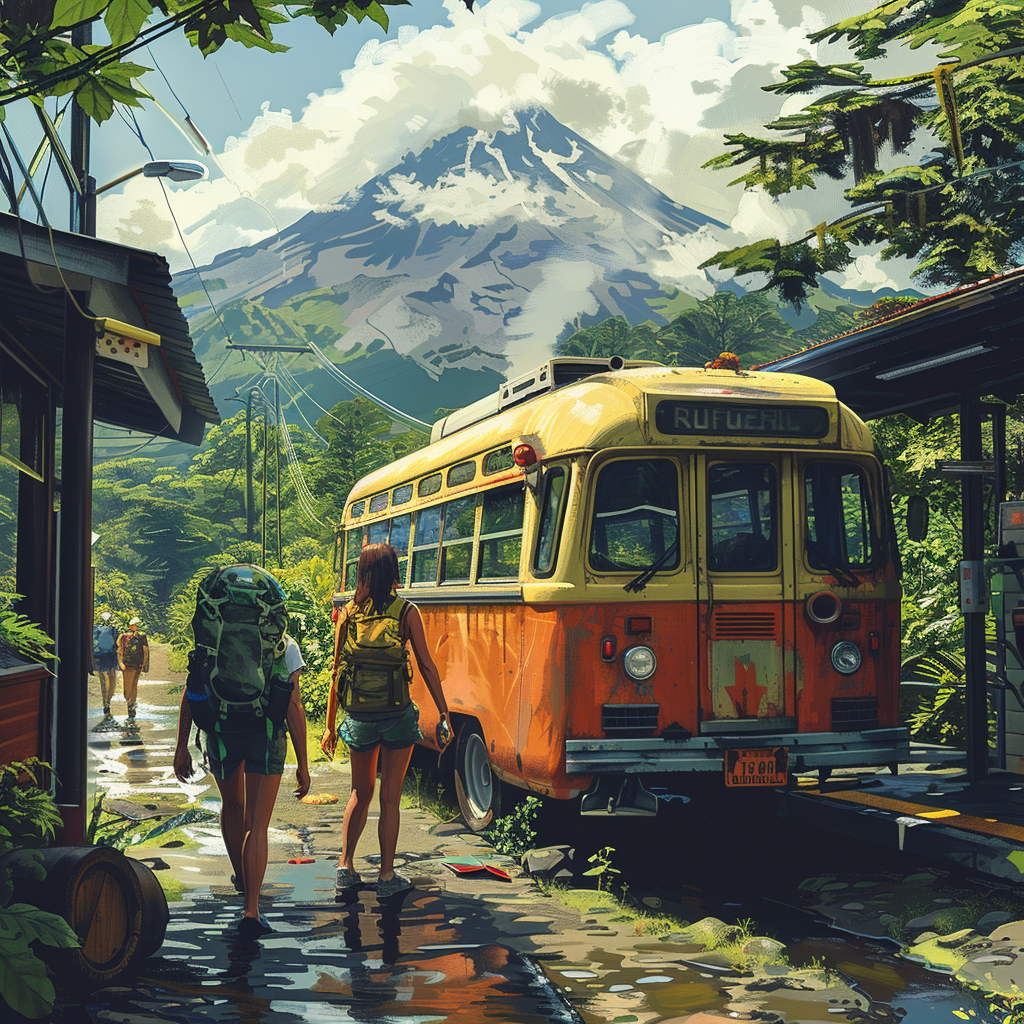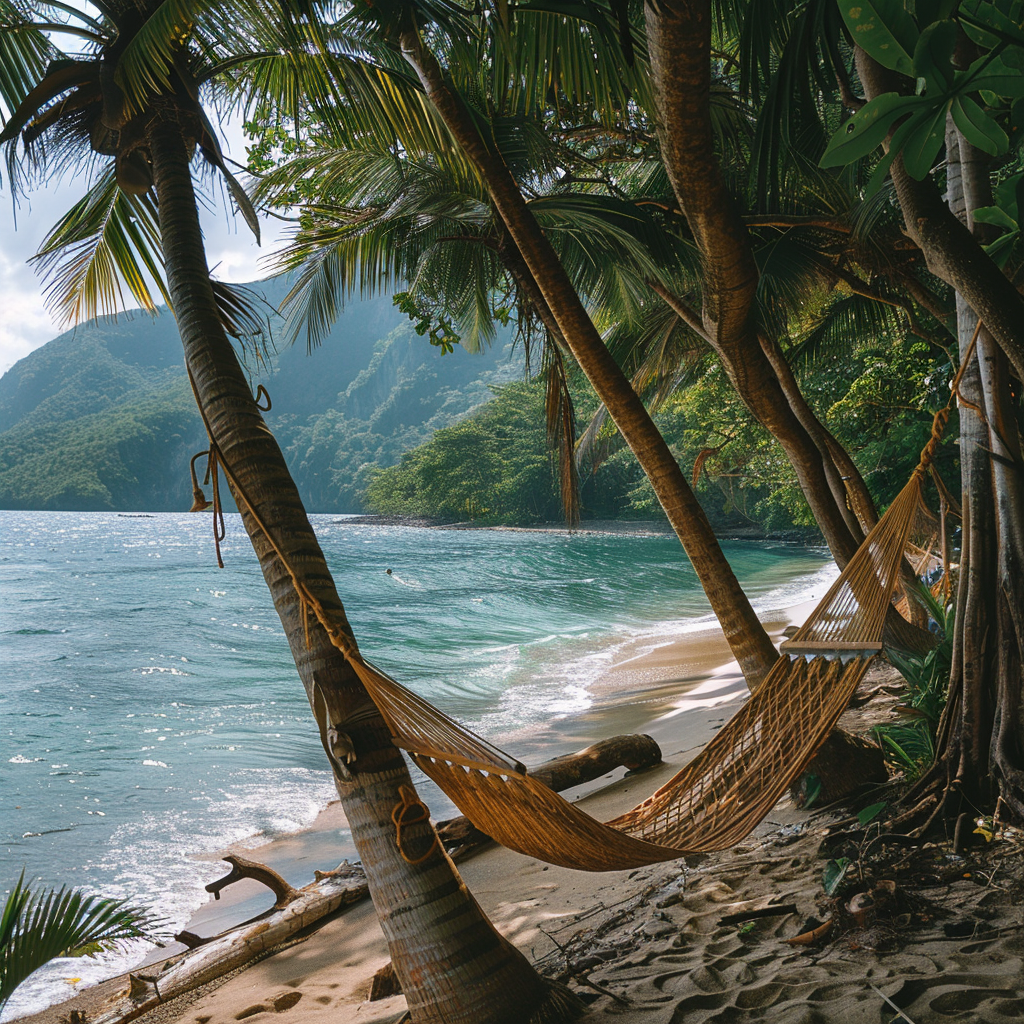
I. Introduction
Costa Rica is celebrated globally not only for its breathtaking landscapes and rich biodiversity but also for being a sanctuary where longevity flourishes. Renowned for its peaceful demeanor and the famous "Pura Vida" lifestyle, Costa Rica offers more than just a picturesque vacation spot; it is also a place where the principles of long and healthy living are embedded in the culture. This Central American nation is distinguished not only by its verdant rainforests and pristine beaches but by the remarkable longevity of its people, particularly in the Nicoya Peninsula, which has been identified as one of the world's "Blue Zones."
"Blue Zones" are regions where researchers have found that people live exceptionally longer lives, significantly surpassing the global average. In these areas, residents are noted not only for their increased lifespan but also for their healthier and more active elderly years. Costa Rica's inclusion in this prestigious group highlights a unique combination of geographical, cultural, and social factors that contribute to the health and well-being of its residents. This blog explores how the confluence of diet, community, lifestyle, and environmental factors in Costa Rica creates an ideal setting for a long and fulfilling life.
II. The Blue Zone of Nicoya
The term "Blue Zone" was first coined by researchers and demographers who identified regions across the globe where people enjoy notably longer and healthier lives. One of these distinguished areas is the Nicoya Peninsula in Costa Rica, a large peninsula on the Pacific coast known for its high concentration of centenarians. This phenomenon of longevity in Nicoya has attracted international attention and study, focusing on the unique lifestyle and environmental factors that contribute to the extended lifespan of its residents.
Demographic and Health Characteristics The Nicoyan population is characterized by a strong community of older adults who not only reach old age but do so with vigor and vitality. Health characteristics commonly observed among them include lower rates of heart disease, obesity, cancer, and diabetes compared to Western populations. Research suggests that the Nicoyans’ physical robustness and mental acuity are maintained well into old age, setting them apart from other populations.
Key Lifestyle Factors Contributing to Longevity Several key factors contribute to the remarkable longevity of those living in the Nicoya Peninsula:
Diet: Nicoyans consume a traditional Mesoamerican diet rich in legumes, corn, fruits, vegetables, and a moderate consumption of animal protein. The local staple, the "gallo pinto"—a dish made of rice and black beans—is packed with fiber and protein. Their diet is low in sugar and processed foods, which are known to contribute to various health issues.
Physical Activity: Daily physical labor and walking are integral parts of life in Nicoya, contributing to regular physical activity. Nicoyans’ routines often involve gardening, farming, and household chores, keeping them physically active without the need for structured exercise.
Social and Family Ties: Strong family connections and an active social life are central to the Nicoyan way of life. Elderly family members live at home with their families or nearby, maintaining a sense of purpose and belonging that bolsters their mental and emotional health.
Sense of Purpose: Often referred to locally as "plan de vida," a strong sense of purpose drives many elderly Nicoyans. Whether it’s family responsibilities, community involvement, or personal hobbies, having reasons to live can contribute significantly to longevity.
Water: Interestingly, the water in Nicoya has some of the highest calcium content in the country, which might help to prevent heart disease and promote stronger bones and teeth.
These factors, intertwined with the Nicoyans' lifestyle, create a conducive environment for a long and healthy life. Understanding these elements offers valuable insights into how certain practices and community-focused living can significantly impact health and longevity.
III. Dietary Habits
The typical Costa Rican diet, especially in regions with high life expectancy such as the Nicoya Peninsula, is a testament to the power of wholesome, nutritious eating. This diet is centered around a variety of fresh, local ingredients that contribute to the overall health and longevity of its people.
Local and Fresh Ingredients The cornerstone of Costa Rican cuisine in these longevity hotspots is the reliance on fresh, locally sourced ingredients. Markets overflow with tropical fruits, vegetables, and a variety of whole grains, which form the basis of every meal. These ingredients are not only less processed but are also packed with essential nutrients, antioxidants, and fibers, which are crucial for maintaining long-term health.
Fruits and Vegetables A typical diet here includes a wide array of colorful fruits and vegetables. Papaya, mango, pineapple, and bananas are some of the commonly consumed fruits, each rich in vitamins, minerals, and antioxidants that support immune health and help reduce inflammation. Vegetables like squash, tomatoes, sweet peppers, and yuca are staples, often served alongside meals. These are excellent sources of dietary fiber, vitamins A and C, and other important minerals.
Whole Grains and Legumes Whole grains such as corn and rice are mainstays in the Costa Rican diet and are often complemented by a variety of legumes, primarily black beans. These are important for heart health and provide a high amount of protein and fiber, which aid in digestion and prolong satiety, helping to manage weight and reduce overeating.
Traditional Dishes and Their Health Benefits Several traditional dishes exemplify the health benefits of the Costa Rican diet:
Gallo Pinto: Perhaps the most famous Costa Rican dish, gallo pinto is a hearty mix of rice and black beans. This dish is often served as a breakfast item, providing a high-energy start to the day with a good balance of carbohydrates, proteins, and essential minerals.
Casado: Another common meal is casado, which usually consists of rice, beans, salad, a tortilla, and a portion of protein like fish, chicken, or meat. The variety in this dish ensures a balanced intake of nutrients, while the inclusion of a fresh salad adds raw vegetables to the diet, boosting fiber and micronutrient intake.
Sopa Negra (Black Bean Soup): This is a popular and nutritious option that delivers a high protein meal, rich in fiber and low in fat, which is beneficial for heart health and overall health maintenance.
The emphasis on whole, unprocessed foods in these traditional dishes plays a crucial role in the diet of Costa Rica’s longest-living populations. By sticking to a diet that includes daily servings of locally sourced fruits, vegetables, whole grains, and legumes, Costa Ricans from regions like Nicoya not only enjoy meals that are delicious and culturally rich but also gain significant health advantages that contribute to their renowned longevity.
IV. Physical Activity and Environment
The interplay between Costa Rica's lush environment and the active lifestyle of its residents, especially the elderly, significantly contributes to the country's high life expectancy. The natural topography and climate of Costa Rica encourage a life that inherently blends physical activity with daily routines, providing both physical and mental health benefits.
Encouragement of an Active Lifestyle by the Natural Environment Costa Rica's varied landscape, with its mountains, forests, and coastlines, naturally promotes physical activity. The need to navigate these terrains for farming, commuting, or even leisure activities like hiking and beach walking, ensures that residents remain active. The pleasant weather throughout most of the year also supports outdoor activities, making it easier for people of all ages to engage in exercise regularly.
Common Physical Activities Among the Elderly In regions like the Nicoya Peninsula, where many of Costa Rica's centenarians live, the elderly population is particularly active. Common activities include:
- Gardening and Farming: Many older adults in Costa Rica participate in gardening and small-scale farming, which are not only physically engaging but also provide a source of fresh produce.
- Walking: Walking is a primary mode of transportation in less urbanized areas, contributing to daily physical activity that maintains cardiovascular health and mobility.
- Community-Based Activities: Dance, yoga, and tai chi are popular in community centers, often tailored to accommodate and encourage participation from the elderly.
Impact of a Clean Environment and Outdoor Activities on Overall Health The benefits of living in a clean environment are manifold. Costa Rica's strong commitment to conservation and sustainability has helped maintain a relatively unpolluted environment, especially in rural areas like Nicoya. The clean air quality and lower levels of environmental toxins contribute significantly to the health of its inhabitants by reducing the incidence of respiratory and other chronic diseases.
Outdoor activities, a staple for many Costa Ricans, offer more than just physical exercise. They also provide exposure to natural sunlight, which is vital for vitamin D synthesis—a key factor in bone health and immune function. Furthermore, engaging in activities in green spaces has been shown to reduce stress levels, enhance mood, and improve overall mental health.
The combination of a clean environment and a culture that promotes regular physical activity helps to forge a lifestyle conducive to longevity. For the elderly, especially, maintaining an active lifestyle enriched by Costa Rica's natural beauty ensures not only longer life but also better quality of life in later years. This integration of activity and environment is a cornerstone of the health and longevity observed in Costa Rica's Blue Zones.
V. Community and Social Structure
The social fabric of Costa Rica, particularly in longevity hotspots like Nicoya, plays a pivotal role in enhancing the lifespan and quality of life of its residents. The strength of family bonds and community networks, coupled with positive cultural attitudes toward aging, significantly contributes to the well-being and longevity of the elderly population.
Role of Family and Community Support In Costa Rica, especially in rural areas and small towns, the extended family remains a vital support system for older adults. Families often live in close proximity to one another or even under the same roof, providing daily social interaction and practical support. This structure not only ensures that the elderly receive care and assistance as needed but also helps them maintain a sense of purpose and belonging.
Community support extends beyond the family. Neighbors often form close-knit groups that look out for one another, sharing responsibilities and resources. This network acts as a safety net, reducing feelings of isolation and promoting a sense of security among older adults.
Cultural Attitudes Towards Aging and the Elderly Costa Rican culture holds a respectful and positive view of aging, valuing the elderly as keepers of knowledge and tradition. Unlike in many Western societies, where aging might be viewed as a decline, in Costa Rica, it is often seen as an accumulation of wisdom and an opportunity to nurture younger generations. This respectful attitude is reflected in everyday interactions and societal norms that prioritize elderly care and involvement in community activities.
Community Involvement and Its Impact on Health Active participation in community life is common among the elderly in Costa Rica, which correlates strongly with lower stress levels and higher life satisfaction. Community centers and local events offer opportunities for the elderly to engage with their peers and the wider community, participating in cultural festivals, religious activities, and volunteer projects.
Such involvement provides emotional and psychological benefits, combating loneliness and depression, which are common problems in older age. The support of a community can also alleviate the impact of economic difficulties by pooling resources and providing mutual aid.
Moreover, the role of spiritual and religious practices, often a communal affair in Costa Rica, contributes significantly to mental health. These activities provide a sense of meaning and continuity, which are essential for personal well-being.
Overall, the strong community and social structures in Costa Rica contribute to a lifestyle that supports healthy aging. By fostering close familial ties and community connections, encouraging respectful and positive attitudes towards aging, and ensuring active community involvement, Costa Rica not only enhances the longevity of its residents but also ensures that their later years are lived with dignity and joy.
VI. Healthcare System
Costa Rica's healthcare system is renowned for its high standards and accessibility, contributing significantly to the nation's impressive life expectancy rates. This system is pivotal in providing comprehensive care to all citizens, including the elderly population, which is a critical factor in the country's status as a Blue Zone.
Overview of Costa Rica’s Healthcare System Costa Rica provides universal healthcare to its citizens and residents through a robust and well-organized system known as the "Caja Costarricense de Seguro Social" (CCSS or Caja). Funded by both the government and payroll taxes, the CCSS is known for its wide coverage and low cost, ensuring that healthcare services are accessible to the majority of the population, regardless of socio-economic status. The system includes public hospitals, clinics, and specialized centers that are equipped to offer a broad range of medical services, from preventive care to complex surgeries.
Accessibility and Quality of Healthcare Services Healthcare accessibility is one of the hallmarks of the Costa Rican system. The government has made significant efforts to ensure that medical facilities are available not only in urban areas but also in rural parts of the country, where many of the elderly population live. These efforts include mobile health clinics and community-based health programs focusing on preventive care, which are especially beneficial to older adults, helping manage chronic conditions more effectively and ensuring continual care.
The quality of healthcare in Costa Rica is among the best in Latin America, with a reputation for excellent patient care and highly trained medical professionals. This high standard extends to geriatric care, with numerous public and private facilities specializing in elderly health. Moreover, the preventative approach taken by the healthcare system helps in early detection and management of diseases, which is crucial for maintaining the health of older adults.
Comparison with Other Central American Countries Compared to its neighbors, Costa Rica's healthcare system is more advanced and better funded. For instance, while countries like Nicaragua and Guatemala also offer forms of universal healthcare, the availability and quality of services in these nations can be inconsistent, with significant disparities between urban and rural healthcare facilities. Additionally, Costa Rica's investment in health education and preventive services is higher than in many other Central American countries, leading to better health outcomes across its population.
Costa Rica's commitment to universal healthcare coverage, its preventive approach to medical services, and its emphasis on accessible care for all age groups, especially the elderly, significantly contribute to its citizens' overall health and longevity. This contrasts sharply with the challenges faced in other parts of Central America, where limited resources and infrastructure often impact the effectiveness of healthcare systems.
VII. Lessons Learned
Costa Rica’s notable success in achieving high longevity among its population provides valuable lessons for the rest of the world. The country’s integrated approach, combining a robust healthcare system with strong social and environmental policies, illustrates how comprehensive strategies can contribute significantly to improving public health outcomes. Here are some key takeaways and insights on how other regions could adopt similar practices:
1. Prioritize Preventative Healthcare: Costa Rica’s healthcare system emphasizes preventive care, which helps in the early detection and treatment of diseases, ultimately reducing the healthcare burden and extending the healthy years of its citizens. Other regions could benefit from investing more in preventative care programs that focus on regular check-ups, vaccinations, community health education, and early intervention.
2. Foster Strong Community Networks: The strong social support networks and community cohesion seen in Costa Rica play a crucial role in promoting mental and physical health, especially among the elderly. Other countries can encourage community-based initiatives that strengthen social ties, such as community centers, group activities, and local health outreach programs, which can improve both the social and physical wellbeing of residents.
3. Promote Active and Healthy Lifestyles: The Costa Rican lifestyle, which integrates physical activity through daily routines and a diet rich in fresh, local ingredients, is a key factor in its citizens' longevity. Other regions can encourage public health policies that promote physical activity through safe walking paths, public sports facilities, and active transportation options. Additionally, supporting local agriculture can make fresh produce more accessible and affordable, encouraging a healthier diet among the population.
4. Respect and Integrate the Elderly in Society: Costa Rica’s cultural respect for the elderly ensures that they remain active and valued members of society. Other regions can adopt policies that integrate the elderly into the community, such as volunteer programs, senior work opportunities, and inclusive events. These initiatives not only provide the elderly with a sense of purpose but also allow them to share their knowledge and experience, enhancing intergenerational bonds.
5. Environmental Conservation and Sustainability: The clean and pristine natural environment of Costa Rica contributes to the health of its inhabitants. Other regions can take a cue from Costa Rica’s strong emphasis on environmental conservation and sustainability efforts. Policies aimed at reducing pollution, preserving natural landscapes, and promoting sustainable practices can have long-term health benefits for the population.
6. Accessible and Comprehensive Healthcare: Finally, the accessibility and comprehensiveness of Costa Rica’s healthcare system are critical in providing quality care to all citizens, regardless of their economic status. Other regions looking to improve their public health outcomes should consider reforms that expand healthcare access, improve the quality of care, and ensure that all segments of the population can receive necessary medical services without financial hardship.
By examining and integrating these practices, other countries and regions can develop strategies that not only extend the lifespan of their citizens but also enhance the quality of life during those years, ultimately achieving better public health outcomes similar to those seen in Costa Rica.
VIII. Conclusion
Costa Rica stands as a beacon of health and longevity within Central America, distinguished not only by its lush landscapes and biodiversity but also by its remarkable demographic of centenarians, particularly in the Nicoya Peninsula. This exceptional longevity can be attributed to a holistic approach that includes a strong healthcare system, robust community support, healthy dietary habits, active lifestyles, and a profound respect for the elderly. Costa Rica’s success story offers invaluable lessons on integrating health, community, and environment in ways that promote well-being and extend life expectancy.
For those looking to understand the secrets behind Costa Rica's impressive longevity rates, a visit to this vibrant country offers more than a vacation; it provides a firsthand experience of a culture deeply embedded with values of health and happiness. Observing and engaging with the Costa Rican way of life could inspire changes in personal habits and broader public health policies elsewhere. Whether you are a policy maker, health enthusiast, or simply a traveler in search of a richer, fuller life, Costa Rica’s model of health and longevity is worth exploring and emulating.







